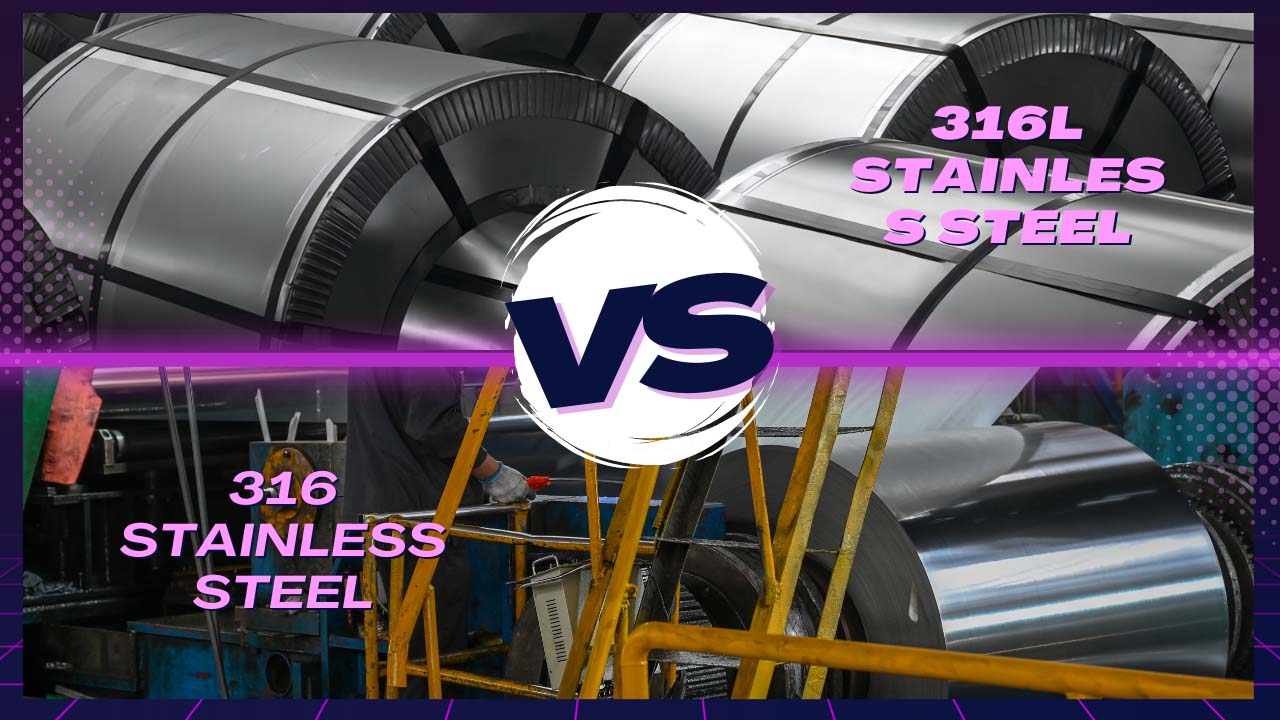Stainless steel alloys are known for their remarkable resistance to corrosion, achieved through the presence of chromium and other metallic elements. 316 stainless steel stands out due to its enhanced resistance to chloride and various acids, making it a popular choice for applications where exposure to corrosive environments is common. This feature distinguishes it from the widely used 304 stainless steel.
316L stainless steel is a variant of 316 that features reduced carbon content, resulting in different characteristics and suitable applications compared to standard 316. This guide will delve into the differences between the two, helping you make an informed decision when choosing aisi 316l or 316 stainless steel for your project.
Definition of Stainless Steel
Stainless steel is primarily composed of iron and carbon, but it also contains at least 10.5% chromium, which gives it a polished finish and excellent corrosion resistance. This makes stainless steel suitable for applications exposed to moisture, corrosive chemicals, or harsh environmental conditions. It’s also widely used in industries like food production and pharmaceuticals due to its low contamination risk.
Different grades of stainless steel are further distinguished by additional metallic elements. Grade 304 stainless steel includes up to 35% nickel, making it versatile for appliances, hardware, and other applications. Grade 316 stainless steel contains molybdenum, giving it higher resistance to acids and salts, which makes it ideal for marine, chemical, and pharmaceutical environments.
316L stainless steel stands out for its reduced carbon content, which makes it more suitable for welding while offering similar corrosion resistance to standard 316 steel. This combination makes ss316l a top choice for certain manufacturing and engineering projects.
Qualities of 316 vs. 316L Stainless Steel
Although both 316 and 316L stainless steel belong to the same family of marine-grade steels, they have distinct characteristics:
316 Stainless Steel: This grade has a moderate carbon content, typically containing between 2% and 3% molybdenum. The presence of molybdenum improves its resistance to chloride-induced corrosion and enhances its resistance to acids. It performs well in high temperatures and corrosive environments, making it a durable choice for many industrial applications. Its excellent malleability makes it suitable for bending, stretching, and spinning.
316L Stainless Steel: With a reduced carbon content, aisi 316L has a maximum carbon concentration of 0.03%. This composition lowers the risk of carbide precipitation, which can occur during welding and cause weld decay. As a result, ss316L is more resistant to intergranular corrosion and maintains its structural integrity after welding. Like 316, 316L stainless steel also contains molybdenum, providing good resistance to acidic elements and high temperatures.
These distinct compositions determine the suitability of 316 and 316L for different projects. Next, we’ll explore key considerations for choosing between these two alloys.
How to Choose Between 316 and 316L Stainless Steel
When deciding between 316 stainless steel and 316L stainless steel for your application, keep the following factors in mind:
Corrosion Resistance: Due to its lower carbon content, aisi 316L offers superior resistance to intergranular corrosion compared to standard 316. This makes ss316L an excellent option for welding applications where corrosion resistance is crucial.
Cost: Despite their compositional differences, 316 and 316L stainless steel prices are generally similar. Costs may vary based on market fluctuations and supplier pricing.
Magnetic Properties: Both 316 and 316L stainless steel are mostly non-magnetic due to their austenitic crystal structure. However, cold forming and welding can make these steels slightly magnetic, particularly 316L.
Practical Applications: While 316 is well-suited for construction and infrastructure due to its strength and resistance to pitting, 316L is favored in pharmaceutical and chemical equipment for its improved weldability.
Your choice between these two grades depends on the specific requirements of your application. Each offers unique advantages that make them suitable for a range of uses.
Market Trends of 316L and 316 Stainless Steel in China
In the Chinese market, 316L stainless steel enjoys a significantly higher market share compared to 316 due to local usage patterns. This preference results in greater inventory availability and a wider selection of thickness options for 316L than 316. Despite similar pricing, the convenient stock levels and versatile applications of aisi 316L make it the preferred choice for most projects unless 316 is specifically required. Therefore, unless your application demands the unique properties of 316, it’s advisable to opt for ss316L due to its accessibility and comparable performance.
Conclusion: 316L Stainless Steel vs 316
The primary difference between 316L stainless steel and 316 lies in their carbon content. 316 has a maximum carbon content of 0.08%, while 316L is limited to 0.03%, giving ss316L superior resistance to intergranular corrosion and making it ideal for welding-intensive applications.
At Aoxing Mill, we offer a broad range of stainless steel products, including 316/316L and 304/304L. Our high-quality materials cater to various industries, from construction to chemical processing. If you need guidance on choosing the best steel grade for your project, our knowledgeable team is ready to assist. Explore our catalog, or reach out to learn more about our products. You can also request a quote to start your order today.
Post time: May-08-2024



